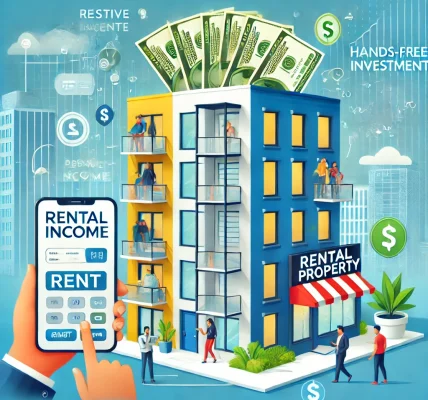Introduction
When evaluating real estate investments, understanding capitalization rates (cap rates) is essential. Cap rates help investors assess potential returns, compare properties, and make informed decisions. This DIY guide will explain cap rates in simple terms, show how to calculate them, and discuss how to use them to evaluate investment properties effectively while staying legally compliant.
What is a Cap Rate?
A cap rate is a key real estate metric used to measure the expected return on an investment property. It represents the relationship between a property’s net operating income (NOI) and its current market value. The cap rate helps investors quickly assess whether a property aligns with their financial goals.
Cap Rate Formula:
For example, if a property generates $50,000 in annual NOI and its market value is $1,000,000, the cap rate is:
A 5% cap rate means the investor can expect a 5% annual return based on the current purchase price.
Why is Cap Rate Important?
1. Evaluates Potential Return on Investment (ROI)
Cap rates allow investors to estimate their expected return before purchasing a property.
2. Compares Investment Properties
A property with a higher cap rate may offer better cash flow but could come with more risk, while a lower cap rate property may provide stability but lower returns.
3. Measures Market Trends
Cap rates help investors understand whether a market is trending towards higher or lower returns.
How to Calculate Net Operating Income (NOI)
To determine the cap rate, you need to calculate the Net Operating Income (NOI):
Example Calculation:
- Gross Rental Income: $100,000/year
- Operating Expenses: $30,000/year
- Net Operating Income: $100,000 – $30,000 = $70,000
If the property’s market value is $1,200,000, then:
What is a Good Cap Rate?
There is no universal “good” cap rate—it depends on the market, property type, and investment goals. However, general guidelines include:
- 4% to 6% – Common in stable, high-demand markets (e.g., urban areas with strong economies).
- 6% to 10% – More common in secondary markets or properties with slightly higher risk.
- 10%+ – Found in high-risk investments or distressed properties.
Factors Affecting Cap Rates:
- Location: Properties in prime areas tend to have lower cap rates due to lower risks.
- Property Type: Commercial properties may have higher cap rates than residential ones.
- Market Conditions: Economic downturns or upswings can influence cap rates.
- Property Condition: Newly built properties often have lower cap rates than older buildings requiring repairs.
- Interest Rates: When interest rates rise, cap rates may also increase.
How to Use Cap Rates in Real Estate Investment
1. Comparing Investment Properties
Investors can use cap rates to compare multiple properties in the same market to determine the best value.
Example:
| Property | NOI | Market Value | Cap Rate |
|---|---|---|---|
| A | $60,000 | $1,000,000 | 6% |
| B | $75,000 | $1,500,000 | 5% |
Even though Property B generates a higher NOI, Property A has a better cap rate and may be a better cash-flow investment.
2. Determining Market Value
If an investor knows the market cap rate, they can estimate a property’s value using this formula:
For instance, if NOI is $50,000 and cap rates in the area are 5%, the estimated market value is:
3. Assessing Risk Levels
- High Cap Rate = Higher Risk, Higher Reward
- Low Cap Rate = Lower Risk, Lower Reward
Investors should balance risk and return based on their goals.
Legal Considerations When Using Cap Rates
1. Accuracy of Financial Data
Ensure that rental income and expense calculations are accurate. Misrepresentation of numbers can lead to legal liabilities.
2. Compliance with Fair Housing Laws
Cap rates should not be used in discriminatory ways when selecting investment properties.
3. Property Disclosures
If selling a property, disclose accurate NOI figures to avoid legal disputes.
4. Local Zoning and Tax Laws
Understand property tax implications and zoning regulations before purchasing a property.
Common Mistakes to Avoid
- Relying Solely on Cap Rate – Cap rates provide a snapshot but don’t account for financing costs or market appreciation.
- Ignoring Future Growth – A low cap rate property in a booming market may be a better long-term investment.
- Overestimating NOI – Failing to account for maintenance, vacancy rates, or unexpected expenses can distort cap rate calculations.
- Not Considering Market Conditions – A high cap rate may indicate market instability rather than a great investment opportunity.
Conclusion
Understanding and using cap rates effectively is crucial for real estate investors. While cap rates help evaluate investment properties, they should be used alongside other factors like market trends, property conditions, and risk tolerance. By mastering cap rates, investors can make smarter, more profitable real estate decisions in 2025 and beyond.




